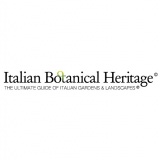
 Italian Botanical Heritage
Italian Botanical Heritage
Italian gardens and parks: Maria Ansaldi Botanical Garden
- WTI Magazine #146 Dec 18, 2021
-

 Italian Botanical Heritage
Italian Botanical Heritage
Built in 1984 by Mountain Community of Garfagnana, this garden is used mainly for educational, scientific and instructional purposes, while it collects, protects and preserves the native flora of the Upper Lucchese Apennines, with special attention to the rare and endangered species.
The Garden, which falls in the southernmost part of the Tuscan-Emilian Apennines National Park, is not far from the Visitor Center of the Orecchiella Nature Reserve, on a slope of the Pania di Corfino, an imposing limestone massif in the upper valley of the Serchio.
In 2014, it was named after Maria Ansaldi, a botanist at the University of Pisa and the scientific curator of the garden, who had prematurely died a year before. She was a valuable researcher and a nature lover as well, who dedicated most of her studies to the flora of Lucca Apennines and the Apuan Alps.
Currently, the garden is used by the Department of Biology of the University of Pisa and the Aquilegia Nature and Apuan Landscape Association for the recruitment of botanical guides (students, undergraduates and graduates who come mainly from the three Tuscan universities); that also involves the possibility of taking exams and internships at this very facility, following a chorological criterion – the correct management of the species present in the various sectors.
Also the Germplasm Bank of the Botanical Garden of Pisa works hard to ensure the ex-situ conservation of the regional flora. With the recent reopening of the Isera Orecchiella Refuge, owned by the Union of Municipalities of Garfagnana, profitable collaboration has also started with a wide offer of food or botanical-themed events – hosted both at the refuge or in this garden.
The garden
It is located at an altitude of 4.495 ft above sea level, in a clearing above the beech forest, dominated by the rocky pinnacles of Pania di Corfino; it covers an area of little less than 2.4 acres. The Garden is arranged into very practical sectors for the visitors: the flora of the woods, the pastures, the heaths, the peat bogs, and rubble with cliffs. Each sector reproduces a different environment found in the territory of Garfagnana and the Apennines. A visit to the Garden thus becomes a short naturalistic excursion.
In the lower part of the Botanical Garden, there is the Hortus Sanitatis, a sector where the plants traditionally used in Garfagnana are grown mainly for their officinal properties. Higher up, there’s the phytoalimurgical garden, dedicated to those species that are traditionally used in Garfagnana cuisine, without neglecting some toxic ones that share the very same habitats and, therefore, represent a potential danger for inexperienced consumers.
Outside the garden, duly fenced to prevent access to ungulates, there are two small naturalistic “museums” with geological, faunal and xylological finds mostly collected by guides over the years; they also exhibit the sub-fossil trunk of silver fir (Abies alba) dating back to around 1200 and found during the excavation works near the Sillano Stream.
The collections
Some 400 plant species offer a breath-taking succession of blooms from spring to summer, a period in which many species usually end their reproductive cycle, except for some that can bloom even later. In addition to peonies (Paeonia officinalis), also the blooms of lilies (Lilium bulbiferum and L. martagon) and various orchids offer a similar eye-catching experience. Not to mention rare and endemic species such globe daisies (Globularia incanescens), St. Bruno’s Lily (Paradisea liliastrum), the alpenrose (Rhododendron ferrugineum), and several varieties of Gentian.
Many other herbaceous plants do not offer such spectacular blooms, they are just as worthy of attention. In addition to the herbaceous species, there are many blooming trees like the Scotch laburnum (Laburnum alpinum), or those with colourful fruits such as rowans (Sorbus aucuparia). All those trees are embedded within the history, the traditions, the cuisine and the popular folklore of this land.